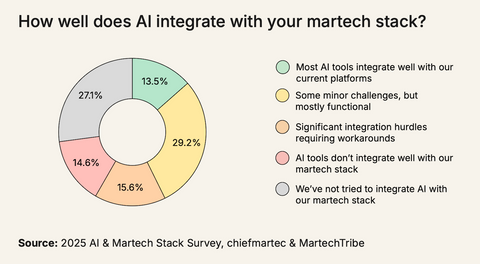The world of SEO is undergoing one of its greatest transformations.
The rise of generative engines—systems capable of synthesizing answers from multiple sources using artificial intelligence (Google AI Overviews, ChatGPT, Perplexity, Claude, etc.)—is redefining how users access information.
Within this new paradigm, a new discipline is emerging: GEO – Generated Engine Optimization.
Its goal? To optimize content visibility within AI-generated answers, whereas traditional SEO only sought to rank within the SERPs (Search Engine Results Pages).
According to a 2024 study published on arXiv (“GEO: Generative Engine Optimization”), content optimized for generative engines can gain up to +40% more visibility in AI-generated responses.
A massive advantage—at a time when nearly half of Google searches now display an AI Overview.
But what exactly is GEO?
How can it be applied to a content strategy?
And most importantly: why is this new approach becoming a strategic growth lever for brands, publishers, and SaaS companies?
1. What Is GEO (Generated Engine Optimization)?
GEO is the practice of optimizing content for generative engines—new search systems powered by Large Language Models (LLMs) that generate synthetic, human-like answers rather than simple lists of links.
The goal of GEO is no longer just to appear in search results, but to be cited, integrated, or summarized within the AI-generated answer.
How a Generative Engine Works
Generative engines like ChatGPT follow a very different process from traditional search engines:
-
Query analysis → semantic understanding of the user’s intent
-
Document retrieval → identification of reliable sources (web, databases, academic papers, press, etc.)
-
Synthesis → generation of a coherent answer in natural language
-
Citation → inclusion of “credible” references to justify the response
A GEO-optimized piece of content is one that the model perceives as:
-
Semantically clear and relevant
-
Credible and well-structured
-
Aligned with the user’s informational intent
-
Up-to-date and verifiable
2. Why GEO Is Becoming Essential
Generative engines disrupt organic visibility
According to a Semrush study (March 2025), 13.14% of all Google queries already trigger an AI Overview (up from 6.49% in January).
For these queries, organic click-through rates have dropped by 20–40%, as users often find what they need without leaving the results page.
In other words, SEO alone is no longer enough.
The future of visibility lies not under the answer—but within it.
+40% Visibility Through GEO
The academic study GEO: Generative Engine Optimization (arXiv, 2024) found that content specifically optimized for generative engines achieved:
-
+40% average visibility in AI outputs
-
+27% direct citations
-
+33% higher user engagement on cited sources
These results confirm that a well-structured GEO approach offers a major competitive edge for brands publishing high-value content.
3. GEO vs. SEO: A Paradigm Shift
| Aspect | Traditional SEO | GEO (Generated Engine Optimization) |
|---|---|---|
| Goal | Rank #1 on Google | Be cited or integrated in AI-generated answers |
| Target | Search engine (indexing/ranking) | Generative engine (understanding/synthesis) |
| Key Criteria | Keywords, backlinks, UX | Clarity, context, credibility, semantic structure |
| Structured Data | Optional | Essential |
| Update Frequency | Moderate | High – AI favors fresh content |
| Format | Pages, blog posts, product sheets | Modular, easily “quotable” content |
| Success Metric | Position / CTR | Citation / Inclusion in AI responses |
GEO does not replace SEO—it extends it into the next generation of search.
4. The Six Pillars of a Strong GEO Strategy
Pillar 1 – Semantic and Hierarchical Structure
LLMs place great importance on logical structure.
Headings, subheadings, and paragraphs must be clear, hierarchical, and contextual.
Best practices:
-
Use a consistent H1 → H2 → H3 structure
-
Begin each section with a summary
-
Add FAQs at the end of the article—generative models love Q&A formats
-
Use logical connectors (“however”, “therefore”, “in contrast”) to clarify reasoning flow
Pillar 2 – Entities and Contextualization
GEO content must be rich in named entities—brands, places, technologies, and concepts.
These “semantic anchors” help AI evaluate text consistency.
Example:
An article about GEO should also mention Google SGE, ChatGPT, Perplexity, LLM, SEO, and MarTech to strengthen its semantic network.
Pillar 3 – Metadata and Structured Data
AI models better process content with complete metadata, such as:
-
Semantically rich title and meta descriptions
-
Structured data via schema.org (Article, FAQ, HowTo)
-
Clear information on author, date, source, and updates
A 2025 arXiv study (AI Answer Engine Citation Behavior) found a direct correlation between structured data and the likelihood of being cited by an AI.
Pillar 4 – Reliability and Evidence
Generative engines favor content that:
-
Cites credible external sources
-
Integrates verifiable statistics or studies
-
Provides transparent editorial traceability (signature, date, link)
In short: to be cited by an AI, you must cite others credibly.
Pillar 5 – Freshness and Reactivity
AI models weigh recency signals heavily.
An outdated or unmaintained article is less likely to be selected.
Best practices:
-
Regularly update key content
-
Display the “last updated” date clearly
-
Add “Latest Trends 2025” sections
Pillar 6 – Domain Authority and Trust Signals
Even as backlinks lose raw value, authority still matters:
Content hosted on a trusted, referenced, or widely shared domain has a much higher chance of being cited by AI.
5. GEO and AI: Optimization Techniques for LLMs
GEO is also about communicating effectively with language models.
Here are some writing principles for LLM optimization:
Use AI-friendly formats
-
Short, direct sentences (subject–verb–object)
-
Avoid ambiguous or metaphorical phrasing
-
Naturally include keywords and synonyms
-
Define technical terms clearly and explicitly
Write independent “information blocks”
LLMs deconstruct text into informative paragraphs.
Each block should stand alone, e.g.:
“GEO (Generated Engine Optimization) is the practice of optimizing content so that it can be cited in AI-generated responses from engines such as Google SGE or ChatGPT.”
Provide context—not keyword stuffing
AI models don’t count keywords; they evaluate semantic density.
Instead of repeating “GEO” endlessly, enrich the lexical field with terms like:
-
“Generative search”
-
“Conversational AI”
-
“Optimization for generative engines”
-
“AI visibility”
-
“AI-friendly content”
6. GEO and MarTech: A New Era for Content Strategy
GEO as a lever for B2B brands
For SaaS, MarTech, or B2B companies, GEO represents a key opportunity to:
-
Position themselves as authoritative sources in generative answers
-
Increase share of voice in AI environments
-
Capture highly qualified, intent-driven traffic
New GEO Performance Metrics
Traditional KPIs (impressions, clicks, average position) are no longer sufficient.
Here are the new GEO indicators to track:
-
AI Citation Rate: how often your domain is cited by ChatGPT, Perplexity, or Google SGE
-
Inclusion Rate: percentage of AI responses that include your domain
-
Post-AI Engagement Rate: how many users click through after seeing your source
-
Semantic Visibility: how well your content covers key thematic clusters
7. Recent Data and Studies on GEO
| Metric | Key Figure | Source |
|---|---|---|
| Average visibility gain via GEO | +40% | GEO: Generative Engine Optimization, arXiv (2024) |
| Google queries showing an AI Overview | 13.14% (Mar 2025) | Semrush (2025) |
| Drop in organic CTR | –20% to –40% | Breaktheweb.agency (2025) |
| AI responses based on content <6 months old | 72% | AI Answer Engine Citation Behavior, arXiv (2025) |
| Structured content cited by AI | +33% vs. unstructured | arXiv (2025) |
| Marketers already integrating AI into SEO | 87% | Ahrefs (2025) |
These figures show that GEO is no longer a theoretical concept—it’s a measurable marketing performance driver.
8. How to Start a GEO Strategy Today
Audit your existing content
-
Identify high-performing SEO content
-
Evaluate its readability for AI (structure, entities, freshness)
-
Focus on informational queries most likely to trigger generative answers
Rework your editorial format
-
Add summaries at the top of each article
-
Structure paragraphs around explicit questions
-
Insert data boxes, definitions, and concrete examples
-
Include links to credible external sources
Implement experimental tracking
-
Test page versions with and without schema.org
-
Monitor mentions in AI tools (Perplexity, ChatGPT, Bing Copilot)
-
Measure generative visibility over time
At Saas Advisor, our experts help you identify and deploy the right tools to optimize your GEO strategy effectively.
9. The Challenges of GEO
Risk of “Decontextualization”
AI may quote excerpts out of context, leading to misinterpretation.
Ensuring the internal coherence of each paragraph is therefore essential.
Race for Freshness and Volume
Constant updating can strain marketing teams.
Companies will need to industrialize updates using automated workflows and AI-powered content ops tools.
Model Collapse and Message Distortion
As discussed in one of our previous articles, joint studies by Stanford, Oxford, Cambridge, and Edinburgh warn of “model collapse,” a process through which AI models gradually lose informational diversity and factual accuracy, compromising their integrity.
Conclusion: GEO — The New Standard in Content Marketing
GEO signals a profound shift in digital marketing:
Brands will no longer compete solely for the first position on Google, but for a place inside AI-generated answers.
The winners will be those who understand:
-
The semantic logic of LLMs
-
The importance of metadata
-
And the power of clear, reliable, and well-structured content
GEO is not a trend—it’s the future of search visibility.
A future where ranking will matter less than being part of the AI narrative itself.





